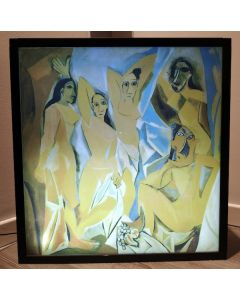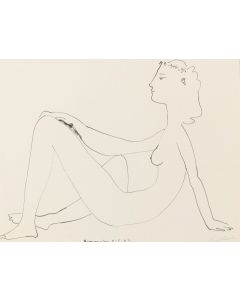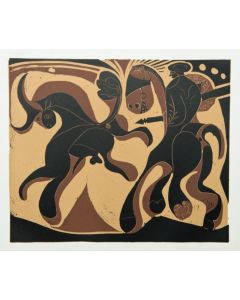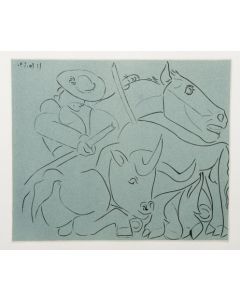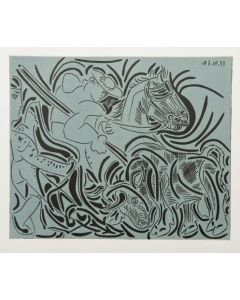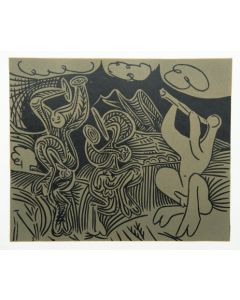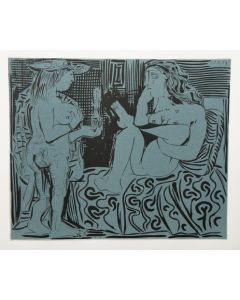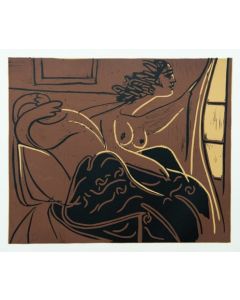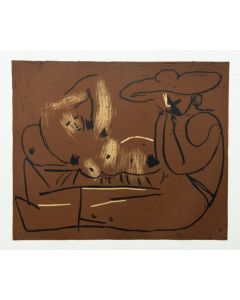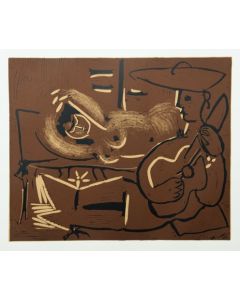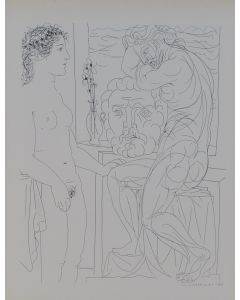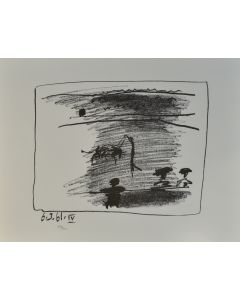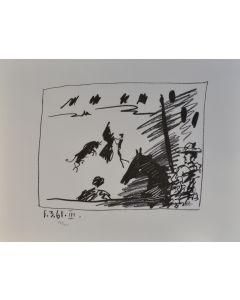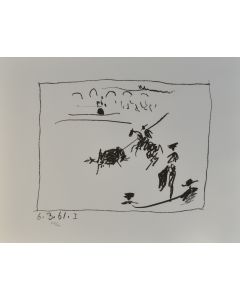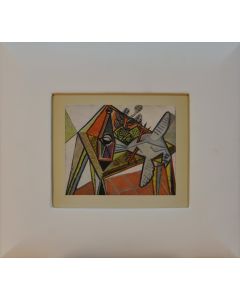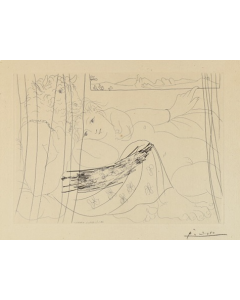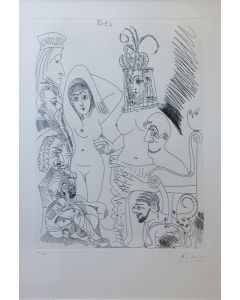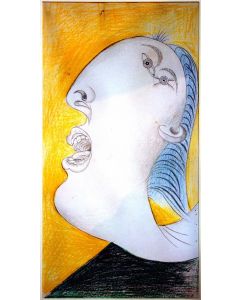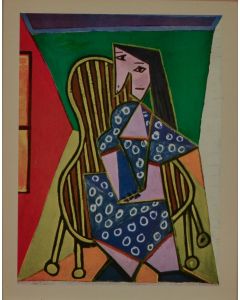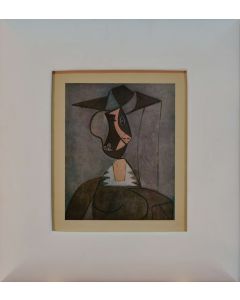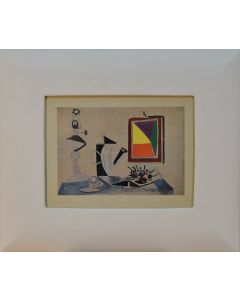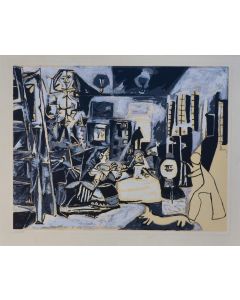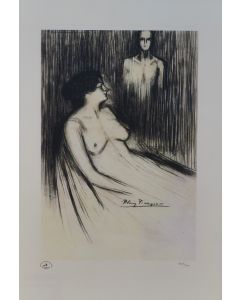Pablo Picasso
Pablo Ruiz Picasso (Malaga 1881 – Mougins 1973) studied in Madrid and Barcelona where he met many artists and authors at Café Els Quatre Gats. In 1900 he was already in Paris. He spent his time with bohémien artists and he ralized his firts artworks.
His young production is articulated in two periods: the blue one and the rose one. He merged clasicism, the influences by the great Spanish painting (from Goya to Velazquez) and the Symbolism by Puvis de Chavannes and Gauguin. From 1901 to 1904 hues of his paintings are cold and gloomy, on the chromatic scale of blues. In 1905 colours became warmer and the protagonists of his works were more and more expressive. During the rose period he painted overall acrobats and circus performers who from Renaissance were the symbol of a miserable, solitary, marginalized life.
The year of the changement is 1907. This is the year of the famous painting Les demoiselles d'Avignon in which we can find influences by Cezanne. From this moment on he is well-known as the pioneer of every artistic Avantgarde.
In 1909 he started to work with Georges Braque and at first they elaborated theories about the Analitic Cubism, that's to say the visual decomposition of every unit: objects are represented as they were observed at the same time from different points of view towards the abstract. Latest there was the period of Synthetic Cubism: shapes are recompacted and they are characterized by a strong simplicity. Overlapping planes, two dimensional surfaces, geometrical compositions, flat brush strokes. The technique more used is collage. After these years Picasso complete his works with three dimensional objects (assemblages).
The First World War stopped Parisian bohéme: at the end of the war Picasso worked for the Russian ballet by Diaghilev. With him he realized settings and dresses in Italy. The influence by ancient art and the paintings of Renaissance put Picasso near rose period again. Artworks of this years were characterized by melancholic atmospheres and shapes were more compact and classical.
From this moment thanks to his fame, he felt more and more free and he ralized painting following his instinct. He wavered between a monumental clasicism, cubism, surrealism and avantgardes.
In 1937 he relized Guernica, enormous canvas which represents pains of the war. With this masterpiece he took part in the Universal Exposition of Paris. After the Secon World War his art wasn't considerated "degenerated art" anymore by totalitarian regimes and he went to live in the South of France.
Picasso is considerated father of every Artistic Avantgarde and his art will influence all next generations in thought, techniques and the way to conceive art.

